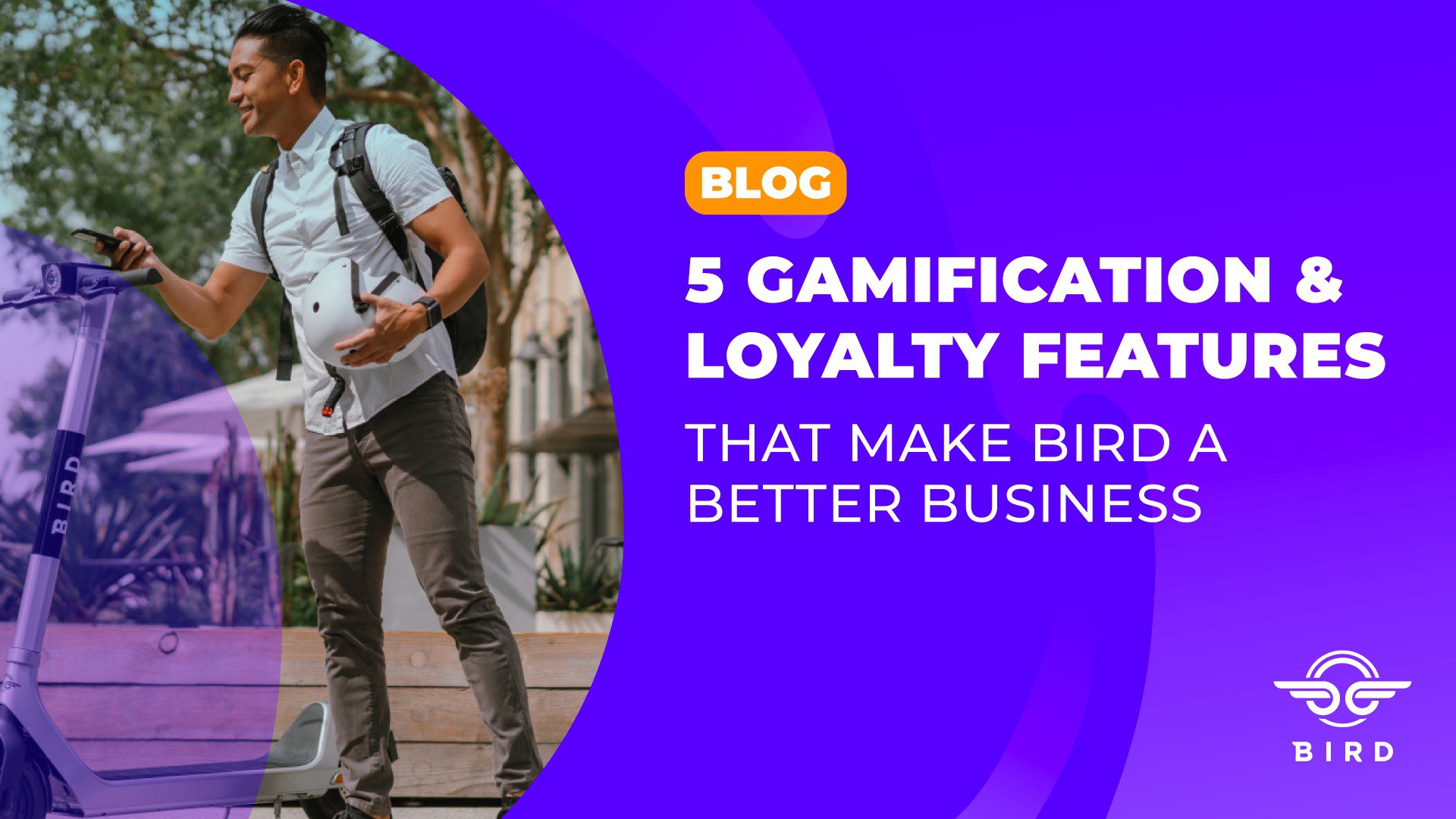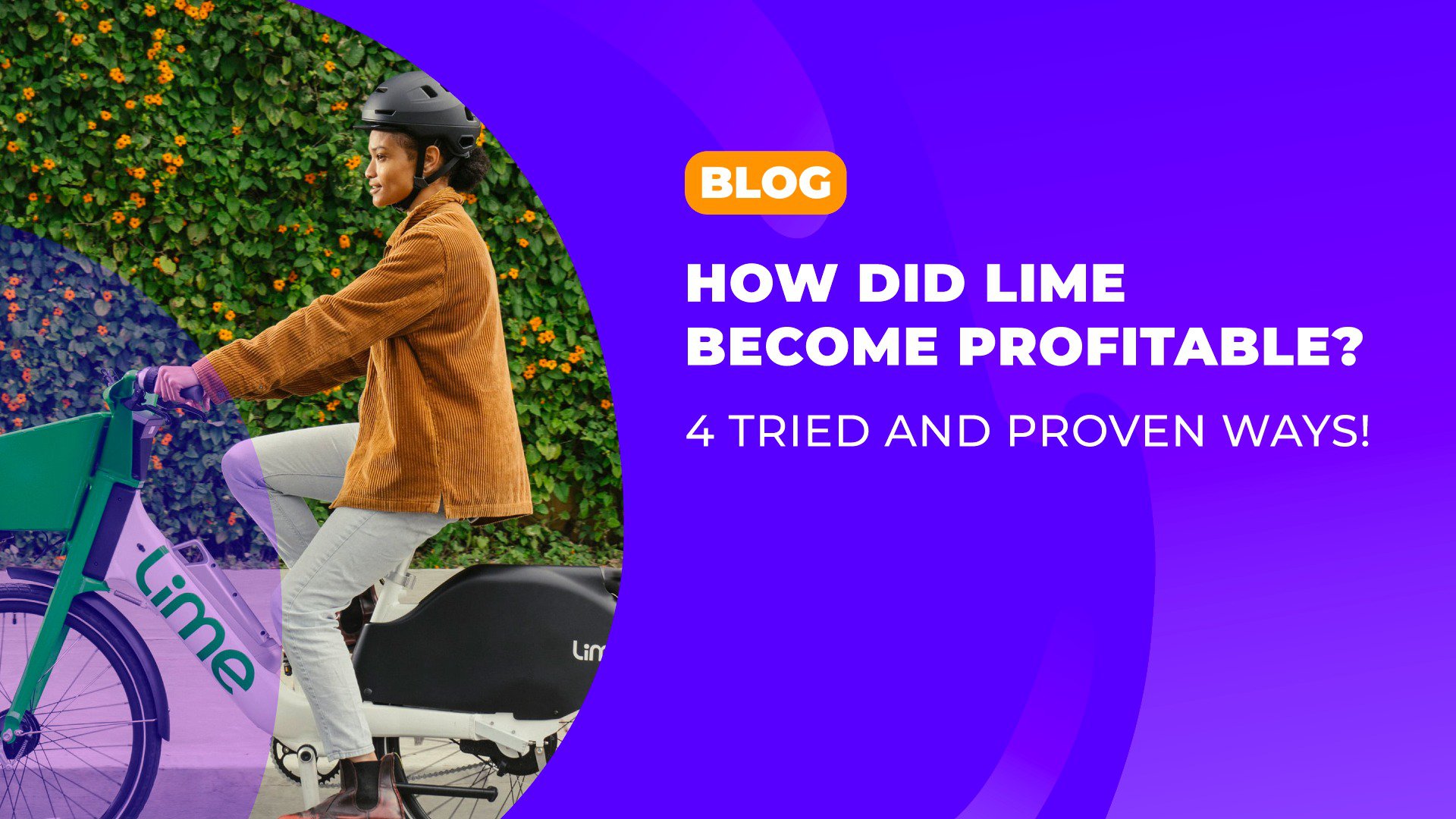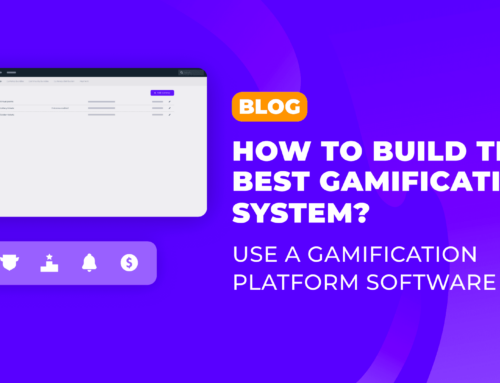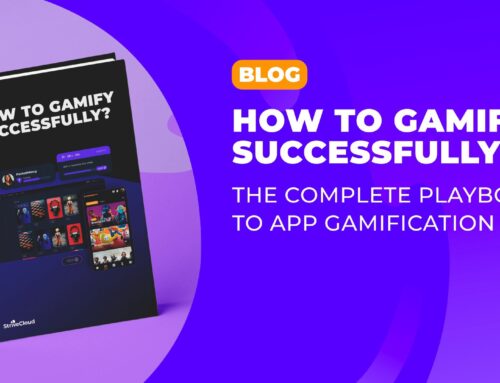5 gamification examples that make Adidas Running app a success
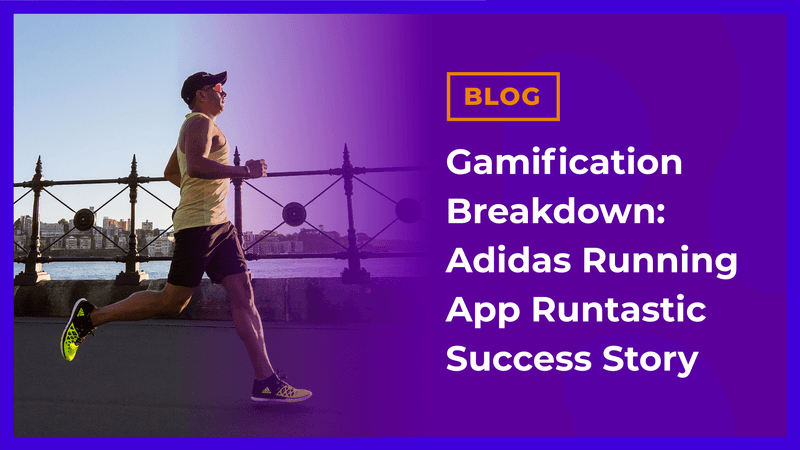
Today’s consumers are not just looking for quality products, but they also want to enjoy a 360° brand experience. One of the companies picking up on this trend is the sports brand Adidas. In 2019 they launched their own activity tracker app.
While exercise and weight loss apps have long held the largest market share, activity tracker apps are the fastest-growing segment in mHealth. So what are the companies in this segment doing right?
For the most part, they are leveraging app gamification to improve user motivation to work out. Examples of gamification strategies are in-app challenges or badge reward systems. These behavioral dynamics are used by the leading apps to generate growing legions of monthly active users committed to exercising.
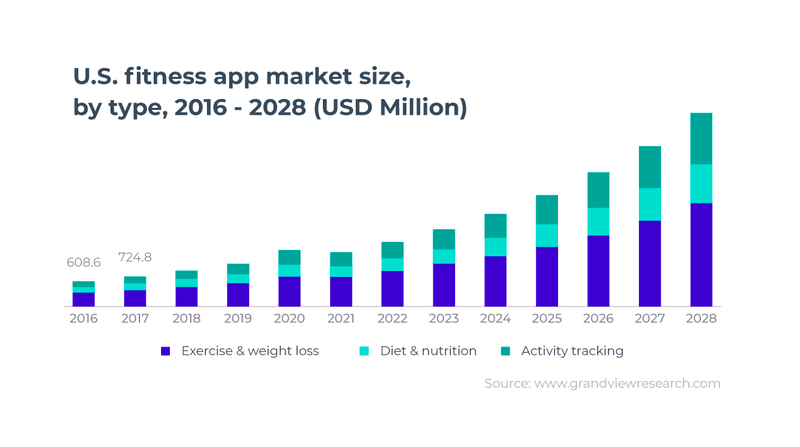
Let’s see how gamification helped the Adidas Running app generate over 5 million participants in the Run For The Oceans campaign. In this article, we’ll cover:
How sports brands are creating customer motivation with mobile app engagement
Market analysis shows that sports brands are driving growth in fitness apps, especially in the activity tracking segment. Athleticwear brands like Asics and Adidas both have leading fitness apps that benefit their business (and their customers) in a few ways:
- Healthy people make healthy consumers. The goal of mHealth mobile app engagement is to keep customers fit and health-conscious. Ultimately, a person that runs regularly is more likely to buy fitness shoes. Hence, most running apps from sports brands integrate their products into the app. Take Nike Run Club, which sends you a notification when you need new trainers!
- Rewarding your userbase results in customer loyalty. The best way to reward your users is to give them an enjoyable experience. Gamification is a key tool to achieving this on mobile apps! For example, Nike Fuel’s partnership with the game Zombies, Run! generated significant customer loyalty for the brand. As an added bonus, Nike reported a boost in R&D productivity and marketing.
- Fitness apps increase customer retention. In using your fitness tracker, customers will store their activity data on your app. How does that create customer retention? Put simply, in the words of a tech analyst from Recon Analytics, “runners will be more loyal to the shoe brand if it also has all [their] stats. Imagine the hassle to switch the data from one app to the next”.
Adidas Running app and the challenge against plastic waste
Adidas is getting serious about sustainability. As a target, the company plans to cut its carbon emissions by 30% before 2030. Of course, the tracker app is a fantastic method to contribute to the company’s social responsibility. A notable example is Run For The Oceans, which challenged the app’s users to run and raise money to fight plastic waste. First launched in 2017, the challenge encourages users to exercise by donating $1 to the cause for every kilometer spent running. In 2018, the campaign raised 1 million dollars!
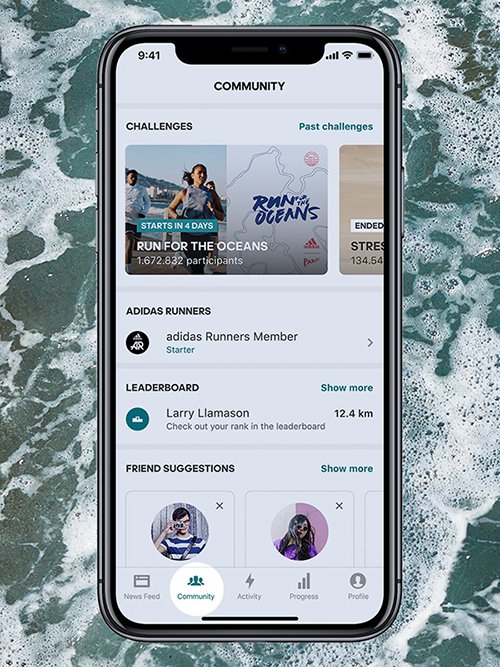
In other words, it will be more authentic when Adidas claims to be sustainable if it has the history to support it. This is a crucial step in unlocking customer motivation and loyalty. In fact, brand authenticity creates perceived value and fosters brand trust!
5 examples of gamification that make Adidas Running a motivation success
By leveraging popular gamification features, Adidas made the Run For The Oceans campaign a real hit. The app is a top-tier gamification example and shows you how to use game-like elements to boost mobile app engagement.
Let’s run through 5 examples of gamification features that motivated users to run a staggering 12 million kilometers in just 1 month.
1. Challenges are fun and motivating, win or lose
A challenge like Run For The Oceans is a validation of one’s self-worth and knowledge. These are powerful intrinsic motivators, as people are driven by the enjoyment of testing themselves. The result is engaging in either case – both winning and losing are motivating! While winners get the dopamine hit of a victory, losers will strive for their own triumph. Research shows that losers actually engage more persistently than those who win.
2. Community features satisfy the need to develop relationships
People are inherently driven by relatedness! Studies into sports app gamification demonstrate that satisfying the basic human need for relatedness is crucial to creating motivation. Adidas Running lets users join local groups and organize events to stay in touch.
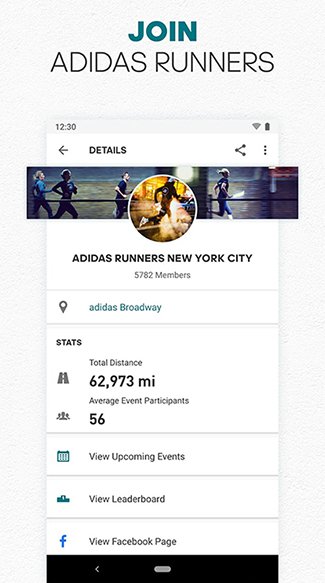
3. Goal-setting gives user autonomy and purpose.
Research proofs that goal-setting is instrumental to achieving fitness targets. It provides users with a personalized purpose and a sense of autonomy – one of the backbones of gamification. Adidas Running facilitates this by allowing customized targets with deadlines, such as cycling 3 times in 1 week. To further increase customer motivation, recent behavioral science shows that goal deadlines are extremely motivating!
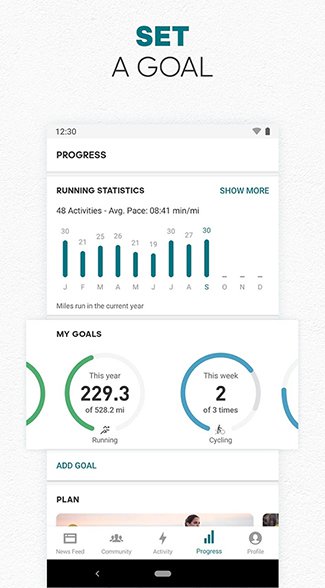
4. Leaderboards instill a sense of competition.
A leaderboard is one of the most effective gamification examples. To sum it up, a leaderboard helps you track progress, share achievements, encourage competition and social interaction.
That’s good because a recent study into fitness apps found that social interaction is a key motivator. Adidas Running achieves this by having separate leaderboards for each community. According to the research paper, the closeness of the community motivates users to run, by increasing confidence and connection.
5. A reward system motivates users to level up.
The Adidas Running Creators Club has four tiers, from challenger up to icon. Each level comes with perks and bonuses such as priority access to special events and free app personalization.
In short, a rewards program encourages long-term thinking in the user and is a great way to increase user retention. The reward system plays on multiple facets of gamification, namely, the constraint dynamic, which means locking features off. People want what they can’t have! In addition, a leveling system creates a sense of social hierarchy and our innate desire to be on top.
These 5 gamification examples are what make the Adidas Running app great. To illustrate the influence of gamification in its success, Adidas bought Runtastic in 2015, with around 70 million users. Quickly, however, Adidas gave the app a make-over. For instance, challenges and goal-setting features were added in 2019. As a result, Adidas Running now boasts 170 million users – that’s an increase of 100 million users in just 6 years!
Recap
Activity tracker apps are the fastest-growing segment in mHealth. One of the market leaders in this field is Adidas Running. They can thank their success to app gamification!
Sports brands are creating customer motivation with mobile app engagement
Market analysis shows that sports brands are driving growth in fitness apps, and there’s a reason why athleticwear companies like Adidas are getting in on the action:
- Healthy people make healthy consumers. Clearly, a health-conscious person more likely to buy fitness shoes.
- Rewarding your userbase results in customer loyalty. For example, Nike Fuel’s partnership with the game Zombies, Run! generated significant customer loyalty for the brand.
- Fitness apps increase customer retention. In using your fitness tracker, customers will store their activity data on your app and get used to it there!
Given this, Adidas bought the running app Runtastic in 2015. Quickly, the app has become a plank of the Adidas digital strategy, and essential to their Run For The Oceans campaign.
Adidas Running app and the challenge against plastic waste
Run For The Oceans challenges users to run and raise money to fight plastic waste. First launched in 2017, the campaign encourages users to exercise by donating $1 to the cause for every kilometer spent running. In 2018, the campaign raised 1 million dollars!
Why is this important to Adidas? In claiming to be a sustainable company, challenges like Run For The Oceans lends authenticity. This is a crucial step in unlocking customer motivation – brand authenticity creates perceived value and fosters brand trust!
5 examples of gamification that make Adidas Running a motivation success
Let’s run through 5 examples of gamification features that motivated users to run a staggering 12 million kilometers in just 1 month:
1. Challenges are fun and motivating, win or lose. Research shows that losers actually engage more persistently than those who win!
2. Community features satisfy the need for relatedness. Studies into sports app gamification demonstrate that satisfying the basic human need for relatedness is crucial to creating motivation. Adidas Running lets users join local groups and organize events.
3. Goal-setting gives user autonomy and purpose. Behavioral science is clear that goal-setting is instrumental to achieving fitness targets! In brief, it provides users with a personalized purpose and a sense of autonomy – one of the backbones of gamification.
4. Leaderboards instill a sense of competition. Adidas Running has a leaderboard for every community, bringing them closer together. This is important as a recent study into fitness apps found that social interaction is a key motivator!
5. A reward system can motivate active usage. The Adidas app created a reward system using different motivational triggers such as progress indicators, a leveling system, and constraint-based motivation through locked-off features.
In short, since buying Runtastic in 2015, Adidas Running has gained 100 million users – and the team at Adidas can thank gamification for contributing to the app’s success.



